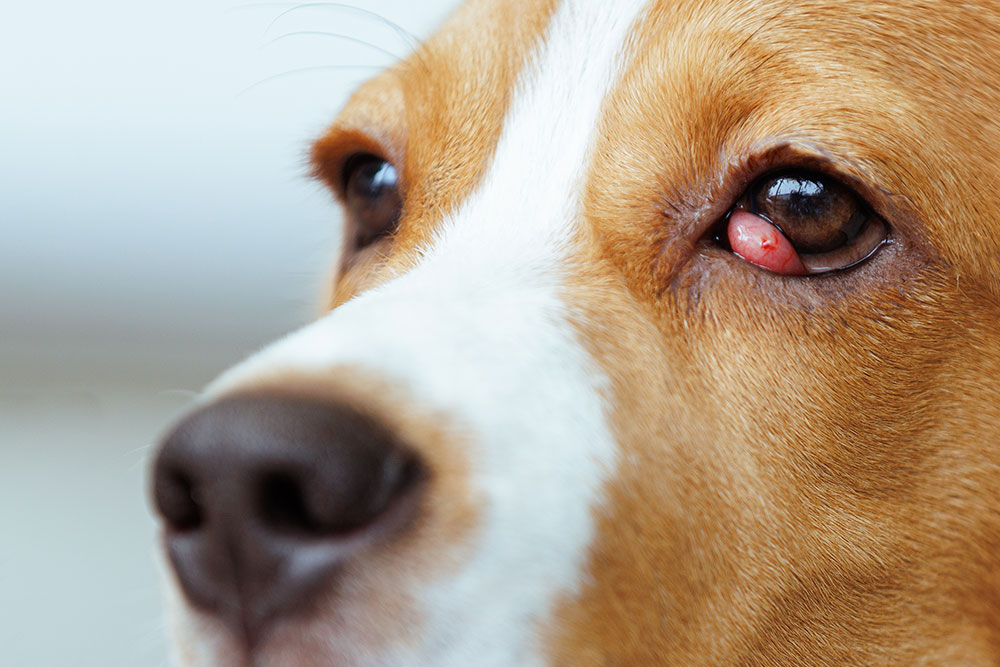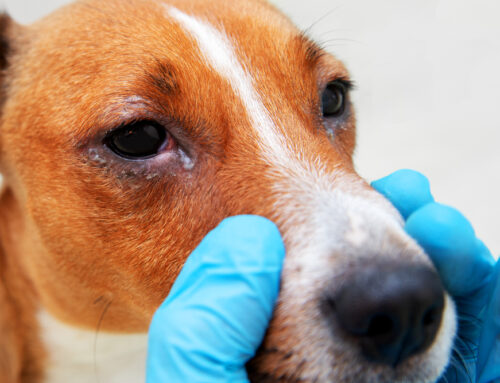Cherry Eye: What It Is and How It’s Corrected
If you’ve noticed a red or pink mass in the corner of your dog’s eye, you might be feeling concerned or even a bit anxious. You’re not alone, and we’re here to help. As a common veterinary issue, cherry eye is something we at Veterinary Vision Center in Shreveport, Louisiana, encounter often. Our goal is to ensure you understand this condition fully so you can make informed decisions for your pet’s health and well-being.
Understanding Cherry Eye in Dogs
Cherry eye refers to the prolapse of the gland of the third eyelid, also known as the nictitating membrane, in dogs. This gland is responsible for producing a significant portion of your dog’s tears. When it becomes dislodged from its normal position, it appears as a reddish mass in the corner of the eye, leading to what we call “cherry eye.” While it primarily affects dogs, it can occasionally occur in cats as well.
What Causes Cherry Eye?
The exact cause of cherry eye remains unclear, but it is believed to be linked to a weakness in the connective tissue that helps hold the gland in place. Certain breeds are more prone to developing cherry eye due to genetic predispositions, including Bulldogs, Boston Terriers, Cocker Spaniels, Beagles, Lhasa Apsos, and Shih Tzus. This condition often presents in dogs under two years of age. For more detailed information, you can read about the extent of cherry eye in dogs.
Why Does Cherry Eye Matter?
The gland of the third eyelid contributes approximately 30-50% of your dog’s tear production, crucial for maintaining eye health and comfort. If left untreated, cherry eye can lead to:
- Chronic dry eye (Keratoconjunctivitis Sicca or KCS): This occurs due to the reduced tear production.
- Increased risk of eye infections: A prolapsed gland exposes the eye to more bacteria.
- Corneal ulcers and damage: Prolonged exposure can lead to serious eye conditions.
- Discomfort and pain: This could impact your dog’s overall mood and behavior. Early intervention is crucial to prevent these potential complications. Learn more about common eye conditions associated with cherry eye.
Recognizing Cherry Eye: Signs and Symptoms
Cherry eye is typically straightforward to identify, appearing as a smooth, round, red, or pink mass in the inner corner of the eye. Other symptoms include:
- Eye redness and inflammation.
- Excessive tearing or eye discharge.
- Squinting or frequent rubbing at the eye.
- Symptoms of dry eye, especially if tear production is compromised. These signs can occur in one or both eyes, and the size of the prolapsed gland can vary.
The Progression and Diagnosis of Cherry Eye
Without treatment, the prolapsed gland can become more irritated and inflamed, potentially leading to scarring. This progression may cause increased discomfort and a higher risk of secondary infections. During a veterinary visit, we will conduct a thorough examination of your dog’s eyes. This often includes a visual inspection and tests such as the Schirmer tear test to assess tear production and a fluorescein stain to check for corneal ulcers.
Treating Cherry Eye in Dogs

When it comes to treatment, there are typically two main options: medical management and surgical correction. Medical Management: While topical antibiotics and anti-inflammatory medications may provide temporary relief by reducing inflammation, they are rarely sufficient as a long-term solution. Surgical Correction: Surgery is the most common and effective treatment. The goal is to reposition the gland to its original location, preserving its function. There are different techniques, including:
- Pocket Technique (Morgan Pocket Technique): This involves creating a pocket in the conjunctiva to hold the gland.
- Anchoring Techniques: In this method, the gland is sutured to surrounding tissue. Surgery aims to permanently resolve the issue while minimizing the risk of recurrence. Older surgical techniques that involve gland removal are not recommended due to the risk of developing KCS.
Risks of Leaving Cherry Eye Untreated
Neglecting treatment can lead to several complications:
- Chronic dry eye and discomfort.
- Recurrent infections and corneal ulcers.
- Potential vision impairment due to scarring. The sooner treatment is initiated, the better the prognosis for your dog’s eye health.
Daily Life with Cherry Eye
Cherry eye can affect your dog’s comfort, leading to constant rubbing or squinting due to irritation. This discomfort can alter their activity level and behavior, impacting their quality of life. Treatment can significantly improve these symptoms, restoring their usual playful demeanor. Post-surgery, your role is vital in ensuring a smooth recovery by administering prescribed medications, preventing your dog from scratching the affected eye, and monitoring for signs of infection.
Your Partner in Canine Eye Health
We understand that handling a health issue like cherry eye can be overwhelming. Rest assured, the team at Veterinary Vision Center is here to support you every step of the way. If you suspect your dog is suffering from cherry eye, please contact us to schedule an appointment. Together, we can ensure your pet receives the care they need for a happy and healthy life.







Leave A Comment